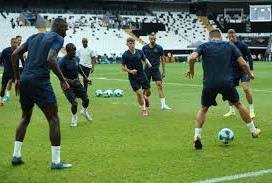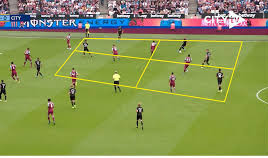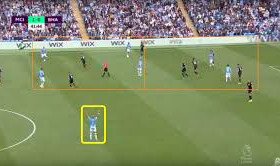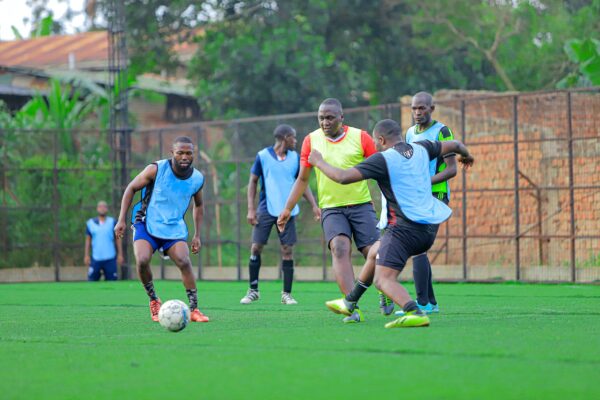In the world of soccer coaching, innovation is key to unlocking a team’s full potential. One such innovative method that has taken the soccer world by storm is the use of Positional Rondos.
Picture this: It’s the dying minutes of an important soccer match. The score is level, and tension hangs heavy in the air.
The players move like chess pieces, strategically positioning themselves on the field, and then, with a burst of precision passing, they orchestrate a breathtaking goal.
What’s their secret? Positional rondos – the hidden gem of soccer strategy that’s about to change the way you coach and play the beautiful game.

Introduction:
These small-sided practices, originating in Spain, have rapidly become a favourite among coaches worldwide.
In this comprehensive guide, we’ll delve into the world of positional rondos, exploring their benefits, the nuances of their implementation, and how they can transform your team’s performance on the field.
By the time you finish reading, you’ll be ready to incorporate this dynamic training tool into your coaching repertoire.
Understanding Positional Rondos:
Positional rondos are a specialised type of small-sided soccer practice designed to hone a player’s technical, tactical, and physical skills.
This practice centres on the principles of possession and positional play, all within the confines of a tight playing space. Typically, a group of players passes the ball amongst themselves while being pressed by a smaller group of defenders.
The primary objective is simple yet profound: maintain possession and progress up the field through precise passing, intelligent movement, and swift decision-making.
At the heart of positional rondos is the emphasis on positional play. Players are tasked with maintaining their positions on the field, orchestrating swift and efficient ball circulation to teammates in space.
This approach nurtures a deeper understanding of player roles and responsibilities, enhances game reading abilities, and cultivates the art of making effective decisions under pressure.

The Alluring Benefits of Positional Rondos:
Positional rondos offer a wealth of advantages for both individual players and teams as a whole. Here are some key benefits to consider:
- Technical Proficiency: Through the focus on short, accurate passing, players can refine their ball control, first touch, and passing precision. Positional rondos serve as a laboratory for honing these critical skills.
- Enhanced Decision-Making: The intensity of positional rondos compels players to think swiftly and choose their actions wisely, even when facing relentless pressure. This heightened decision-making ability readily transfers to real-game situations.
- Fitness Gains: The high-tempo nature of positional rondos can act as a dynamic fitness regimen. Players improve their conditioning, endurance, and agility as they navigate the demanding playing environment.
- Positional Play Prowess: The practice’s core focus on maintaining positions and efficiently circulating the ball instils a profound understanding of player roles and responsibilities on the field. This knowledge is a cornerstone of effective teamwork.

Implementing Positional Rondos: A Step-by-Step Guide
Now that we’ve highlighted the advantages of positional rondos, let’s explore how to effectively implement them into your coaching routine:
- Set Up the practice:
- Gather 4-6 players in a circular or rectangular playing area spanning 5-10 yards.
- Add one or two defenders to apply pressure to the group in possession.
- Define Objectives:
- Ensure that your players grasp the fundamental objectives of the drill, namely, maintaining possession and executing efficient ball movement.
- Emphasise Technique:
- Encourage your players to adhere to sound technical principles.
- Stress the importance of maintaining visual awareness (keeping their eyes up) and employing the inside of the foot for precise passing.
- Add Constraints:
- To intensify the challenge, consider incorporating constraints such as limiting the number of touches each player can take or requiring a specific number of passes before a shot on goal.
- Vary the Practice:
- To keep the practice engaging and thought-provoking, experiment with variations.
- Adjust the number of players, alter the size of the playing area, or modify the number of defenders to simulate different scenarios.
- Analyse and Discuss:
- Post-practice analysis is pivotal to its effectiveness.
- Engage your team in a discussion about what went well, what needs improvement, and how the skills acquired in the drill can be applied in actual match situations.

The Impact of Positional Rondos
Let’s journey into an anecdote that showcases the transformative power of positional rondos. This was a situation I actually found myself in a few years ago with my own team.
Imagine a youth soccer team struggling with maintaining possession during games. Their coach decides to introduce positional rondos into their training regimen.
Over the course of several weeks, the team diligently practices the sessions. Players become more adept at quick, precise passing and maintaining their positions.
Their decision-making abilities become sharper, and they grow increasingly comfortable under pressure.
In a crucial league match, the team faces a formidable opponent. Despite the odds, they dominate possession throughout the game.
Players move the ball with the precision they’ve honed in positional rondos, confounding the opposition. The result? A resounding victory, the first of many.
Conclusion:
Positional rondos stand as a revolutionary training tool that can propel your team to new heights of success.
These small-sided sessions hone technical prowess, foster sound decision-making, boost physical fitness, and instil a deep understanding of positional play.
As a coach, it’s crucial to introduce your players to this dynamic training method. Remember to maintain a challenging environment, adapt to the constraints, and conduct thorough post-practice analysis to ensure your team reaps the maximum benefits.
So, whether you’re a seasoned coach seeking fresh strategies or a player looking to refine your skills, embrace the world of positional rondos.
It’s a journey that promises improved performance, enhanced understanding of the game, and a renewed sense of team cohesion.
With positional rondos in your coaching arsenal, you’re one step closer to building a stronger, more successful team. It’s time to witness the transformative potential of these drills for yourself, so don’t hesitate to give them a try – your team’s success awaits.


